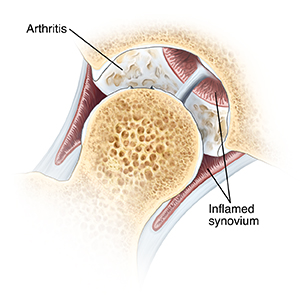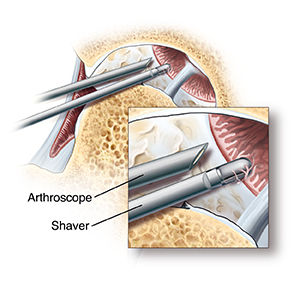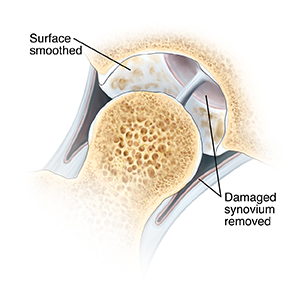Synovitis of the hip causes the lining of the joint (synovium) to become inflamed, painful, and swollen. With arthritis, a large amount of the firm, smooth tissue covering the “ball” and “socket” of the hip (cartilage) is damaged. Using only small incisions and special tools, arthroscopy can help fix synovitis and arthritis.
In the operating room
Just before surgery, you may be asked several times which hip is to be treated. This is a standard safety measure. In the operating room, you will likely receive medicine (anesthesia) to make you sleep or numb the area.
During the procedure
After you receive anesthesia, your leg is gently pulled to widen the hip joint. Next, the surgeon makes a few small incisions called portals. Through these portals, the surgeon inserts surgical tools, including the arthroscope. The arthroscope sends images of the joint to a screen. These images allow the surgeon to look inside the joint. The joint is filled with sterile fluid to help the surgeon see more clearly.
Repairing synovitis and arthritis
For synovitis, part of the damaged synovium is removed. This may be done by shaving tissue using special tools. For arthritis, the loose or torn cartilage is removed. Or it may be smoothed with a shaver. Arthritis can lead to bone spurs. If bone spurs are present, they may be removed. Once the surgeon finishes, the portals are closed and bandaged. Then you are taken to the recovery room.




